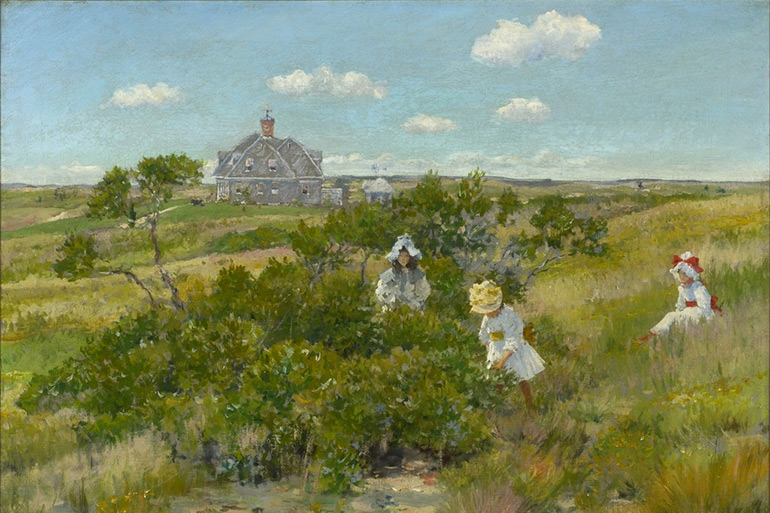Talk Explores William Merritt Chase's Relationship with Shinnecock Nation

William Merritt Chase famously painted many of his iconic scenes in Southampton’s Shinnecock Hills, but not everyone knows the artist also had a relationship with the Shinnecock Indian Nation. In conjunction with Chase’s works currently on view in William Merritt Chase: The Shinnecock Years at the Parrish Art Museum, Chief Curator Alicia G. Longwell, Ph.D and Shinnecock historian David Bunn Martine will lead a talk about this relationship on Friday, January 25 at 6 p.m.
Part of Every Picture Tells a Story—featuring selections from the Parrish Art Museum’s permanent collection—William Merritt Chase: The Shinnecock Years presents works by Chase and his students, augmented by archival photographs taken between 1890–1910 from Martine’s book Time and History, and detailed wall texts.
“This exhibition has given us a wonderful opportunity to shed light on a history that has been little considered in the story of William Merritt Chase’s years in the Shinnecock Hills,” Longwell said, explaining the work that inspired Friday’s talk.
Chase, who painted the Shinnecock Hills starting in 1891, was the founding director of the Shinnecock Hills Summer School of Art. The portraits on display depicting Shinnecock Indian Nation members who worked for the Chase family and the art school society—including women who grew produce and functioned as laundresses, and men who served as fishing and hunting guides—tell the story of how Chase impacted the community through his ties to the Shinnecock tribe over 25 years.
During these many summers Chase and his family spent in Shinnecock Hills, Mrs. Chase began to record their lives, taking photographs with her Kodak box camera and printing them in blue-toned cyanotype. Over time, bonds grew among Chase, other “summer colonists” and the people of the Shinnecock Reservation. These relationships had a personal impact on the Chase family. In a tribute to their neighbors, the Chases gave their fourth daughter Hazel, born in Southampton, the middle name “Neamaug”—a Shinnecock word meaning “between the waters.” Students from the Shinnecock Hills Summer School of Art also, for a fee, were permitted to set up their easels on the pristine Reservation lands.
The Chases and the community relied on these neighbors for everything from food to domestic support, hiring Shinnecock women and shopping for produce, eggs, broiler chickens and Muscovy ducks at their abundant market gardens. Martine remembers his grandmother Alice Martinez recalling, “We canned a lot of vegetables. And Father [Charles Bunn, David Bunn Martine’s great-grandfather] used to store cabbage in the basement in sand.”

The Shinnecock were also a part of the summer colonists’ leisure activities. Men from the Reservation built the Shinnecock Hills golf course—as depicted in an image dated around 1900. Others, well known for hunting and fishing skill, were hired as guides.
This association is revealed in a copy of Bunn’s advertisement for “Instruction of Young Boys in Handling Firearms” in Chase’s ca. 1894 painting “The Pot Hunter,” and the 1894 hunting scene “Captain Harlow’s Lot, Southampton” by his student Reynolds Beal.
Just as they did for the exhibition, Longwell and Martine are bringing their combined knowledge to the table for what will surely be a lively and illuminating discussion on Friday.
See Alicia Longwell and David Bunn Martine on William Merritt Chase: The Shinnecock Years at the Parrish Art Museum (279 Montauk Highway) in Water Mill this Friday, January 25 at 6 p.m. Call 631-283-2118 or visit parrishart.org for more info.



